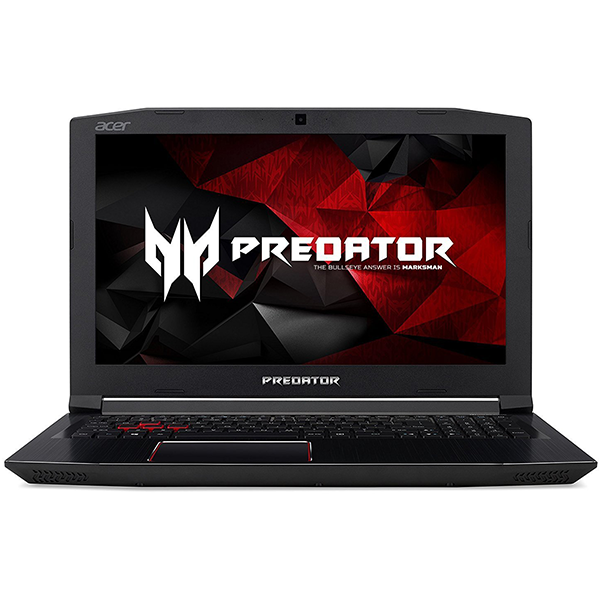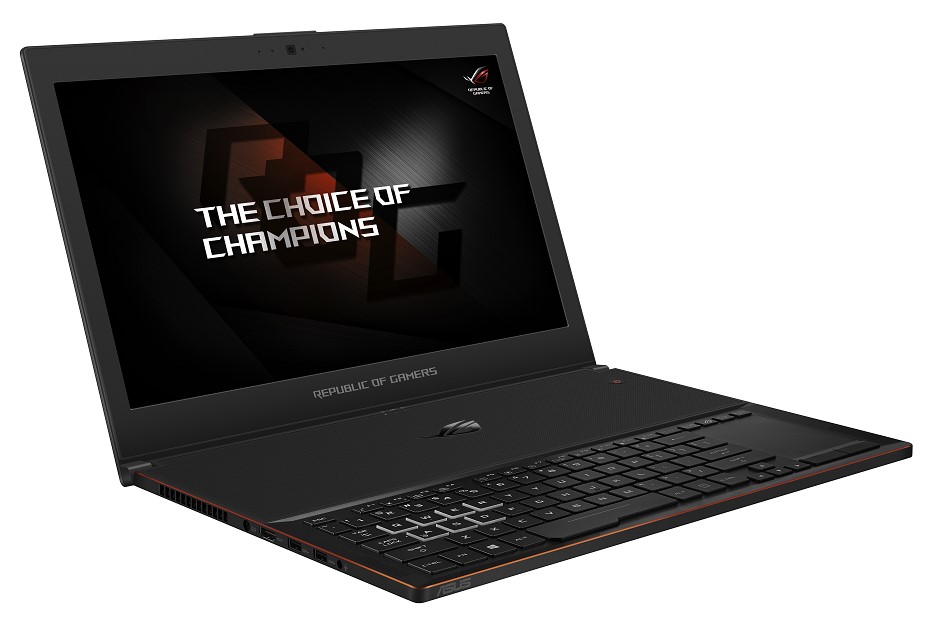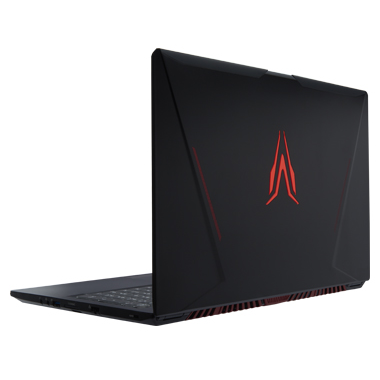Asus ROG Zephyrus (GTX 1070) Max-Q Gaming Laptop Review
Why you can trust Tom's Hardware
Synthetic Benchmarks
This wouldn't be a proper comparison if we didn't place the GTX 1070 Max-Q version against its high-end sibling—you'll be able to see what the extra horsepower gets you and whether it's worth the step up in price (about $400). The Asus ROG Zephyrus we previously tested contains a Core i7-7700HQ, a GTX 1080 Max-Q, 24GB of DDR4-2400 memory, and a 512GB M.2 SSD. The displays are the same.
For a better head-to-head comparison, we've included the Eurocom Q5. Like the Zephyrus (GTX 1070), the Q5 features a Core i7-7700HQ, a GTX 1070 Max-Q, and 16GB of DDR4-2400 memory. Its display is a FHD anti-glare TN panel with a 120Hz refresh rate. Additionally, it has a larger 512GB M.2 SSD. Measuring 0.74” thin and weighing 4.2lbs, the Eurocom Q5 is lighter than the Zephyrus, but slightly thicker.
Our comparison roundup brings in a traditional GTX 1070 by way of the MSI GE63VR Raider. This unit contains a Core i7-7700HQ, 32GB of DDR4-2400 memory, and a 512GB M.2 SSD. Unlike the three Max-Q laptops, the Raider has enough space to support a 1TB 7200RPM HDD. It features an FHD matte display with a 120Hz refresh rate.
Finally, we've included the Acer Predator Helios 300, which has a Core i7-7700HQ, a GTX 1060, 16GB of DDR4-2133 memory, and a 256GB M.2 SSD. Its display is a FHD matte IPS with a 60Hz refresh rate. The Helios specifications aren't particularly interesting, but it offers impressive performance at a fair price; we gave the Helios our Editor's Choice award due to its outstanding value.
3DMark

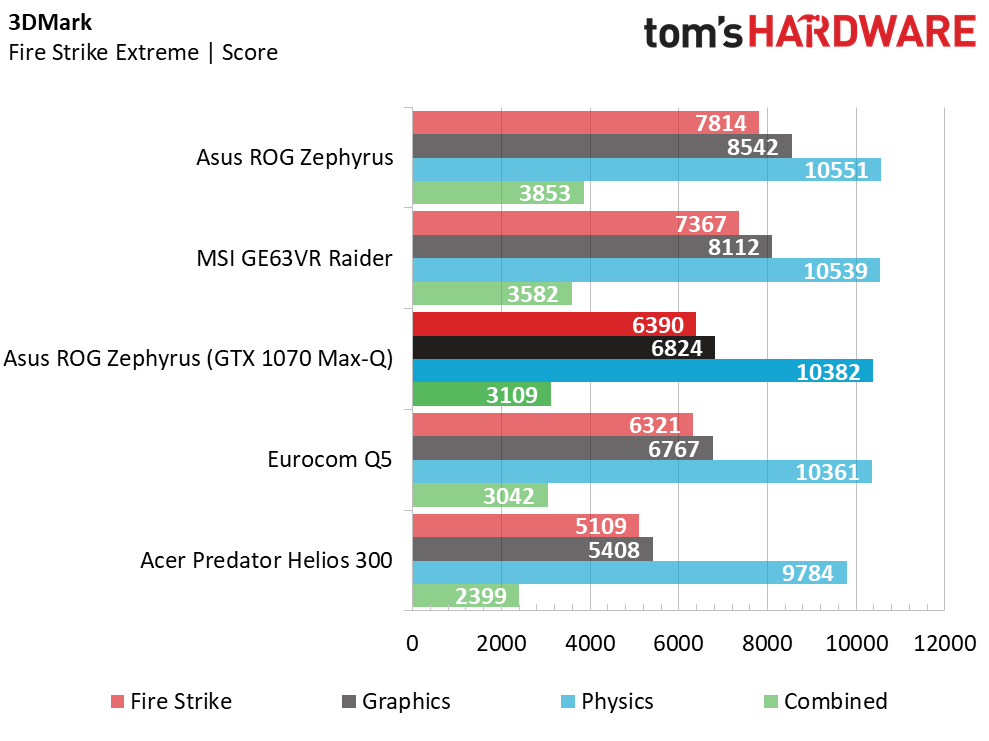
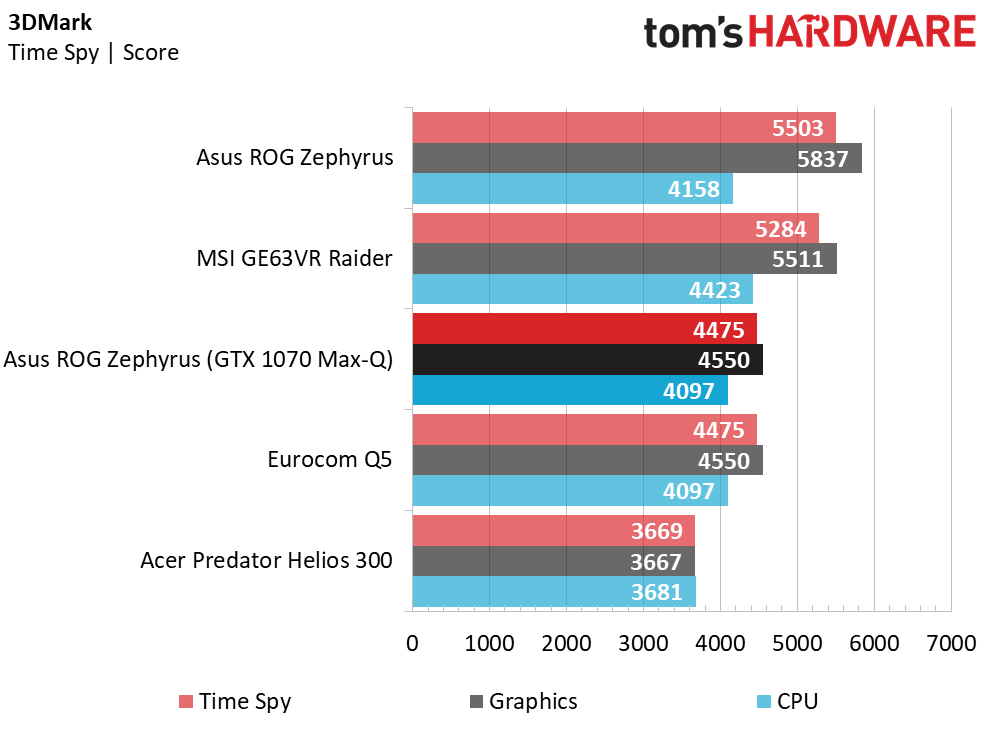
3DMark's graphical benchmarks are useful because they give us a preview of the type of gaming performance we can expect. The Zephyrus (GTX 1070) and Eurocom Q5 go head to head throughout. They perform considerably better than the Acer Helios, but fall short of the MSI Raider, whose GTX 1070 doesn't have Max-Q's power restrictions.
Cinebench R15
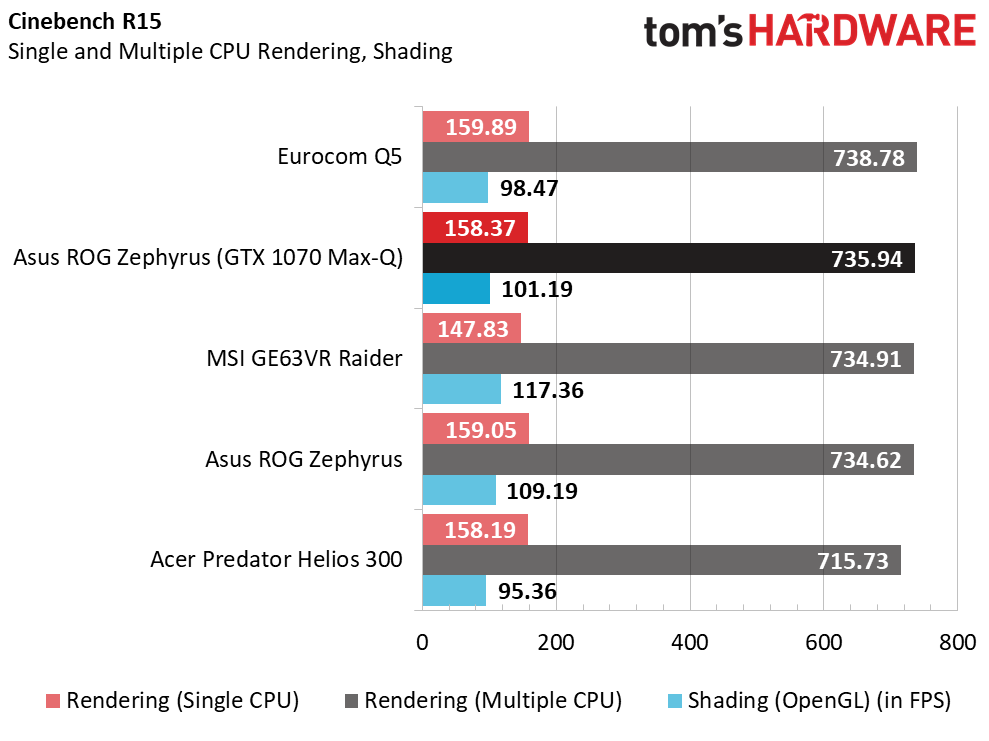
Cinebench features CPU-focused single and multi-core rendering tests as well as an OpenGL shading test, which grants a slight edge to systems with apt GPU horsepower.
All of the systems in this roundup feature an Intel Core i7-7700HQ, so performance differences are negligible at best. The only major difference is in OpenGL shading, where the MSI Raider's GTX 1070 and Zephyrus' GTX 1080 Max-Q take the spotlight.
CompuBench
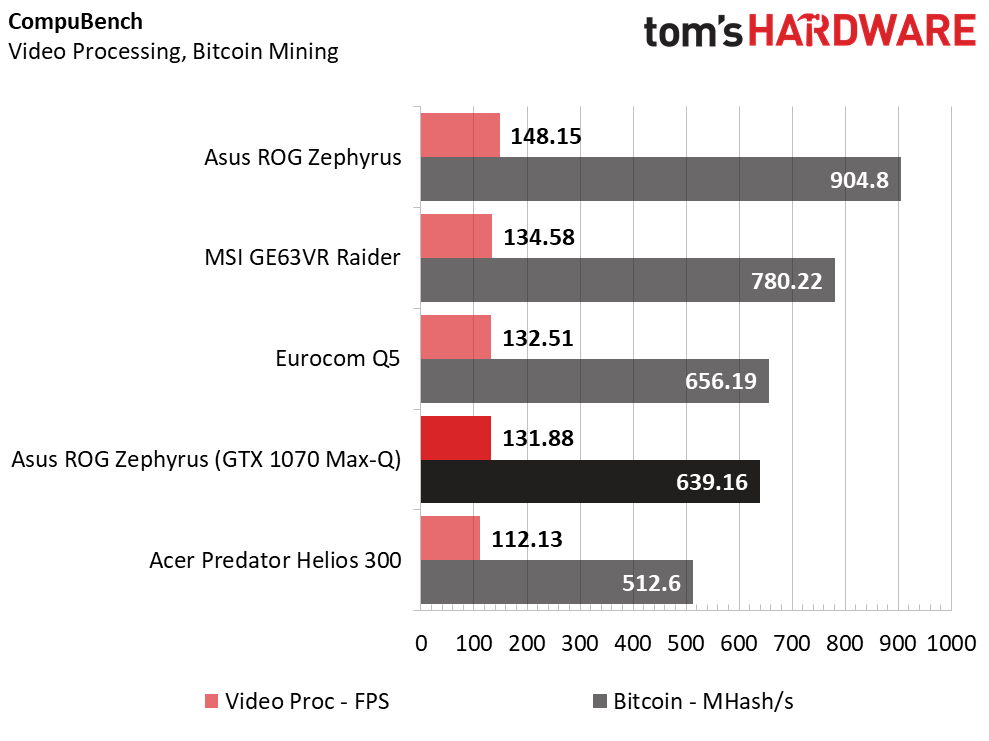
CompuBench has a variety of workloads to choose from. We use the platform-based Video Processing test and a GPU-heavy Bitcoin Mining test. Video Processing scores between the GTX 1070-based laptops are virtually identical, Max-Q or otherwise. Meanwhile, the Acer Helios's GTX 1060 bottlenecks the VidProc results, scoring 15% lower than the Zephyrus (GTX 1070), whereas the stronger Zephyrus scores 12% higher thanks to its GTX 1080 Max-Q. The Bitcoin Mining scores illustrate even wider performance gaps, with the MSI Raider performing 22% faster than the Zephyrus (GTX 1070).
IOMeter
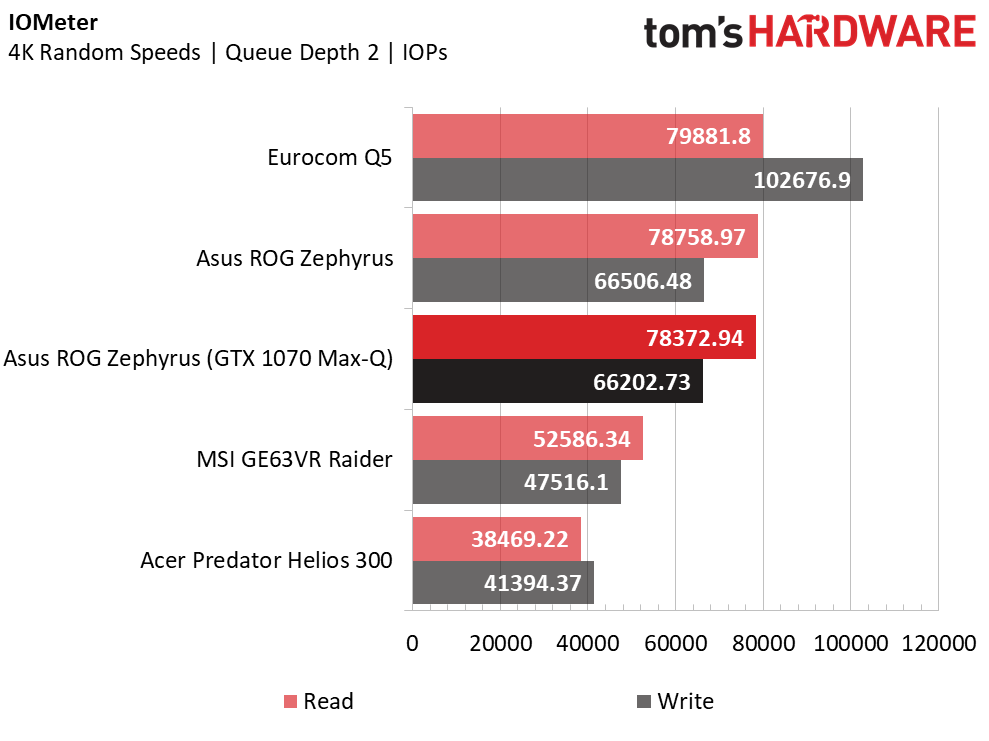
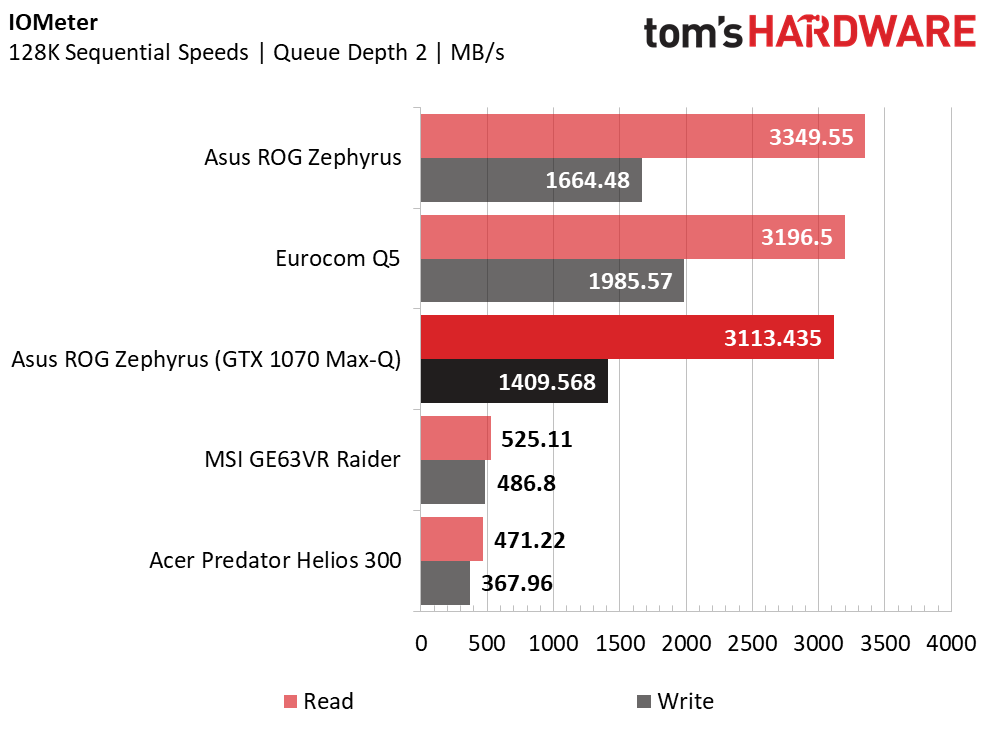
We perform an IOmeter test on each laptop’s primary drive to measure basic random and sequential read and write speeds.Both iterations of the Zephyrus contain a 512GB Samsung SM961. The Eurocom Q5 features a 512GB Samsung 960 Pro. The MSI Raider contains a 512GB Samsung PM 871. The Acer Helios is the outlier with its 256GB Micron 1100.
The Zephyrus laptops have the same SSD, so the relatively even random and sequential speeds are to be expected. The Q5's 960 Pro delivers considerably better write speeds across the board. Meanwhile, the Raider and Helios SSDs deliver mediocre speeds.
PCMark 8
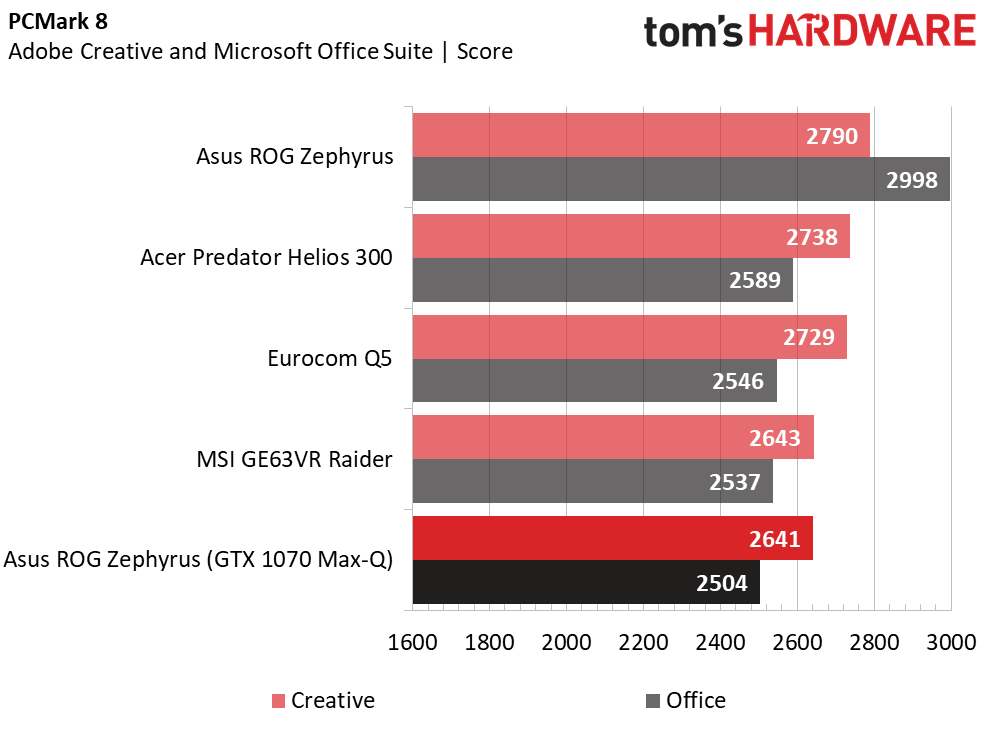
PCMark 8 hosts home, creative, and office workloads, but if you have Microsoft Office and Adobe Creative installed, you can utilize PCMark’s specialized Office and Creative tests, which will give you a better approximation of a system’s performance. Given their identical CPUs, the Zephyrus (GTX 1070), Eurocom Q5, MSI Raider, and Acer Helios all deliver similar Adobe Creative and Microsoft Office scores. It isn't until you step up to a stronger GPU, such as the GTX 1080, that we see a performance boost. These differences are minor, however.
MORE: Best Gaming Laptops
MORE: Gaming Laptop Previews
MORE: All Laptop Content
Current page: Synthetic Benchmarks
Prev Page Introduction & Product Tour Next Page Gaming BenchmarksStay On the Cutting Edge: Get the Tom's Hardware Newsletter
Get Tom's Hardware's best news and in-depth reviews, straight to your inbox.
-
AgentLozen Hey Stephen555! Thanks for the Instagram link!Reply
I was really dubious about the whole Max-Q thing when I first heard about it. I didn't think it was possible to get a big video card into a slim laptop without thermal consequences.
It seems like I was right to be skeptical about the GTX 1080. That card seems to get hot no matter how much you cripple it's performance. The GTX 1070, on the other hand, seems to hit a sweet spot. The performance is excellent and the temperatures are reasonable. The testing also shows that the display is fantastic. If I was in the market for a new laptop today, I would seriously consider getting ASUS Zephyrus 1070 Max Q after reading this review.
As it stands, I'm willing to wait a few months for Volta. -
AgentLozen Replymilkod2001 said:If a few months mean next year then yeah go ahead and wait.
That's news to me. I'd like to read the source you got that from. Would you mind posting a link? -
sellputcall That keyboard without a palm rest looks _really_ uncomfortable. Anyone try it and has an opinion on it?Reply
